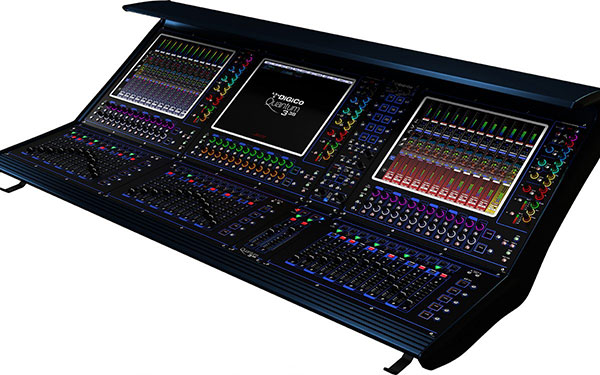DiGiCo Launches Quantum338 at NAMM 2020

DiGiCo has revealed the latest in its new generation of Quantum consoles, the all-new Quantum338 at NAMM 2020. Like Quantum7 and Quantum5, Quantum338 represents a dramatic leap forward in power and connectivity. It includes impressive new design features and enhancements that offer ultimate flexibility, all with the same speed of operation that Quantum users have come to rely on, in a smaller format console.
“With Quantum338, we have ensured that we are providing a next generation console that works in synergy with our Quantum Engine,” says Michael Aitchison, DiGiCo’s Senior Electronics Engineer. “We focused our R&D team on user experience, learning from the last 20 years, with our continuing main objective of merging new with familiar.”
Quantum338 is based on seventh generation FPGAs and includes 128 input channels with 64 busses and a 24 x 24 matrix, all with full channel processing. There is a new look and feel dark mode application and three 17 inch 1000 nit, high brightness, multi-touch screens, allowing both the meter bridge and soft quick select buttons to be displayed on each screen. There are also 70 individual TFT channel displays and the floating Quantum chassis features 38 x 100mm touch sensitive faders laid out in three blocks of 12 fader banks, and two dedicated user-assignable faders, each complete with high resolution metering.
A new level of local audio connectivity and performance comes via the “Ultimate Stadius” 32 bit ADC and DAC conversion, which are built in to Quantum338 as standard, alongside six single or three redundant MADI connections, dual DMI slots and a built-in UB MADI USB recording interface. Mustard Processing, Spice Rack, Nodal Processing, and True Solo are also standard on the Quantum338. Quantum338 is equipped with 36 mono Mustard processing strips, which can be used on any channel type.
“The entire system architecture is new and exciting,” concludes Austin Freshwater, DiGiCo’s General Manager, “but just to recap on a few cool highlights, we have improved transparency of audio, provided more audio toys, bigger, brighter multi-touch PCAP screens, increased visual feedback and an all new work surface architecture!”